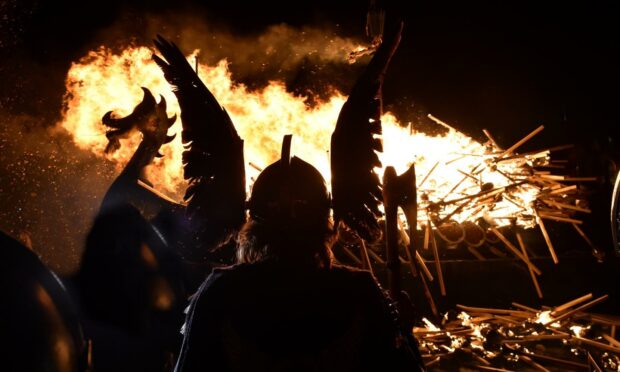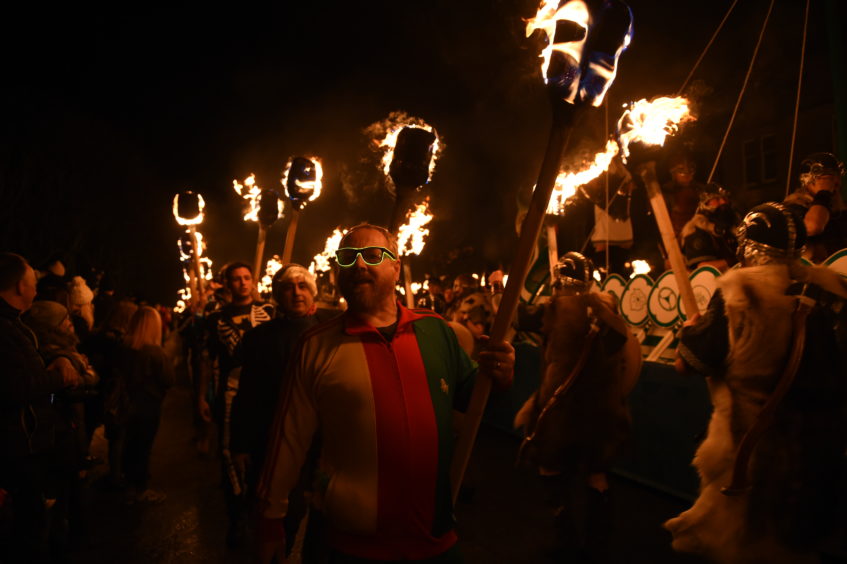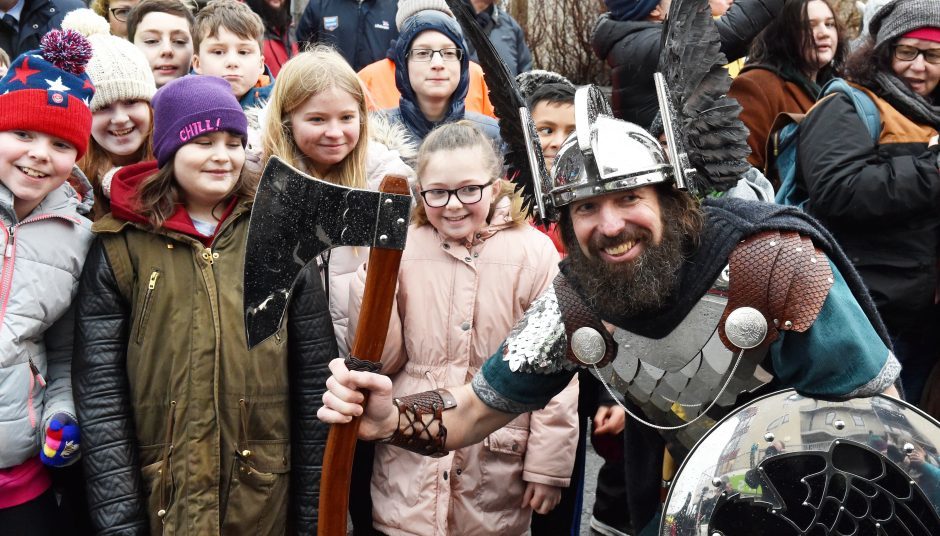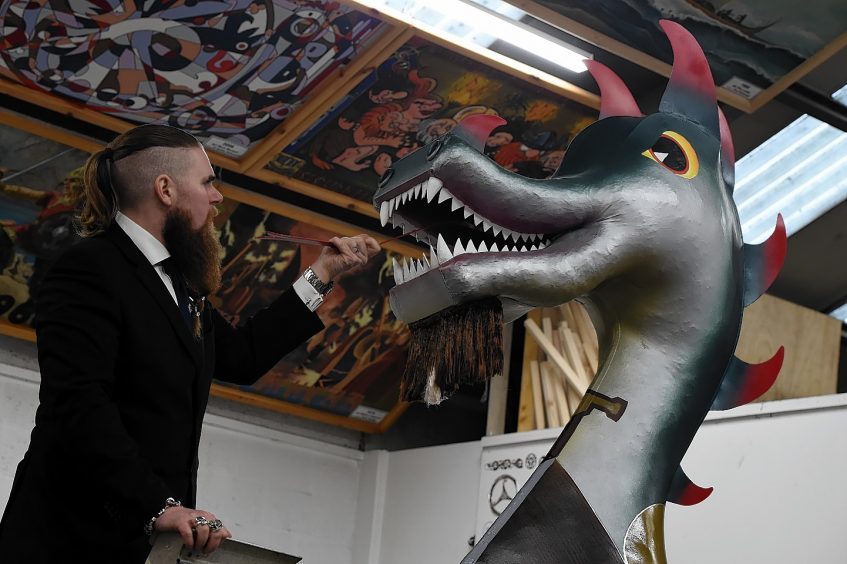On the last Tuesday of January each year thousands of people gather in Lerwick to celebrate Shetland’s Viking heritage with Up Helly Aa.
The event is the biggest event on the island’s social calendar – and the biggest spectacle of its kind during the fire festival season.
Each year thousands of islanders and visitors gather to watch the Jarl Squad and other guizers march in a torch-lit procession through the town before the ceremonial burning of the galley.
The festival’s roots stem back to the 1800s with celebrations becoming more elaborate as Lerwick grew in size and population.
As far back as the 1840s, there is evidence of rival participants burning tar barrels, which led to some complaints from the middle-class residents of the town.
Special constables were employed to try to prevent these activities.
However, squad members simply dressed in sacks to disguise themselves and saw this as extra excitement.
What is Up Helly Aa?
A few decades later, a group of young men decided to adapt the event by gradually adding more Viking themes.
The name Up Helly Aa was also adopted at this time, as well as the element of guizing and the torchlit procession – much like how the event is carried out today.
The Viking galley boat, which is a significant symbol and component of the current fire festival, became part of the event in the late 1880s.
This was followed by the introduction of the chief guizer in 1906.
Although they are responsible for much of the organisation today, having a Jarl Squad lead the procession each year did not become the norm until after the First World War.
Other traditions which are still part of Up Helly Aa in present day include the proclamation at Market Square – which generally pokes fun at authority – and the hours-long “after party” at halls across the town.
Fire festival brought to life by volunteers
Despite attempts to cancel the Lerwick festival in the past, it has proven it can stand the test of time having remained largely the same over the past century.
All of the participants must have lived in Shetland for at least five years before they are able to join a squad, which are made up of the hundreds of guizers who march in the procession.
Almost 1,000 men take part each year – which is more than triple the amount that took to the streets at the outbreak of the First World War.
The organisation takes months of hard work by a dedicated group of volunteers with the Up Helly Aa committee made up of 17 elected members.
One big change put in place in 2023 was the relaxation of the gender restrictions, which meant women – and girls for the junior event – were able to join Up Helly Aa squads for the first time.




Conversation